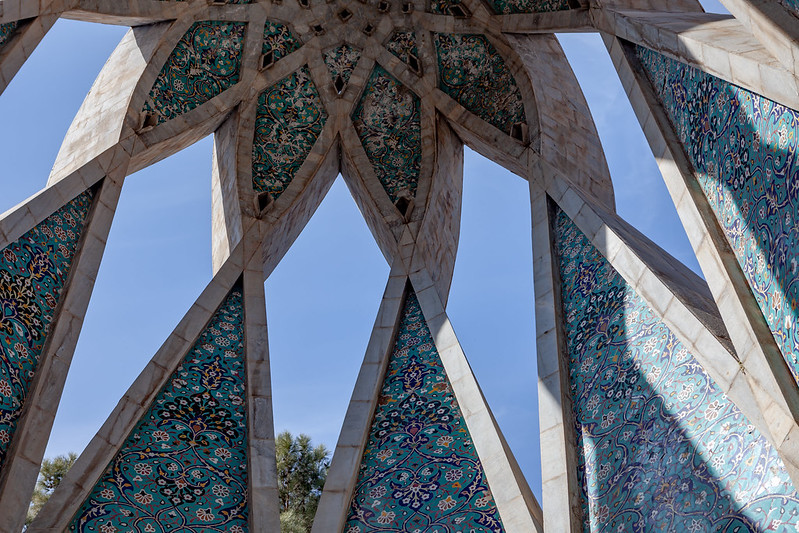2.3.3 Islamic Theology

Mausoleum of Omar Khayyam, Neyshabur, Iran. Photo Credit: Ninara.
Kalam generally dealt either with attempting to justify religious beliefs to reason, or with employing reason to draw new conclusions and consequences from these beliefs. Its doctrines comprise three major components: the articulation of what a school regarded as fundamental beliefs; the construction of the speculative framework within which these beliefs must be understood; and the attempt to give coherence to these views within the accepted speculative framework. The various schools of kalam agreed with the traditionalists in accepting the authority of texts as the basis of the first component. They disagreed, however, about the extent to which these texts should be subjected to ‘rational’ analysis… (Islamic Philosophy Online).
Read: Islamic Theology // Islamic Philosophy Online
- What distinguished the approach to theology by the Khawarij from the Shi’a in early Islam?
- How did the Mu’tazila’s approach challenge more traditional and conservative approaches to Islamic theology?
- What different positions were held concerning the “grave sinner”?
- What were the major methodological disagreements among the different schools of Muslim theology? Do these persist today?
- What led to the decline of kalam from the fifth to the ninth century?
- What do you think the state of kalam is today?
Photo: “Mausoleum of Omar Khayyam. Architect Hooshang Seyhoun 1963.” Neyshabur, Iran. Photo Credit: Ninara, 2011. CC BY 2.0. Omar Khayyam (18 May 1048 – 4 December 1131) was a Persian mathematician, astronomer, and poet.


